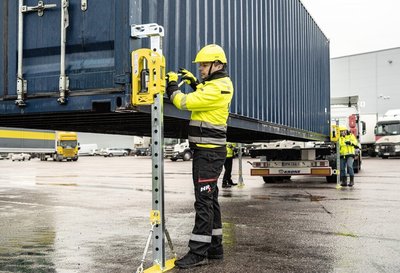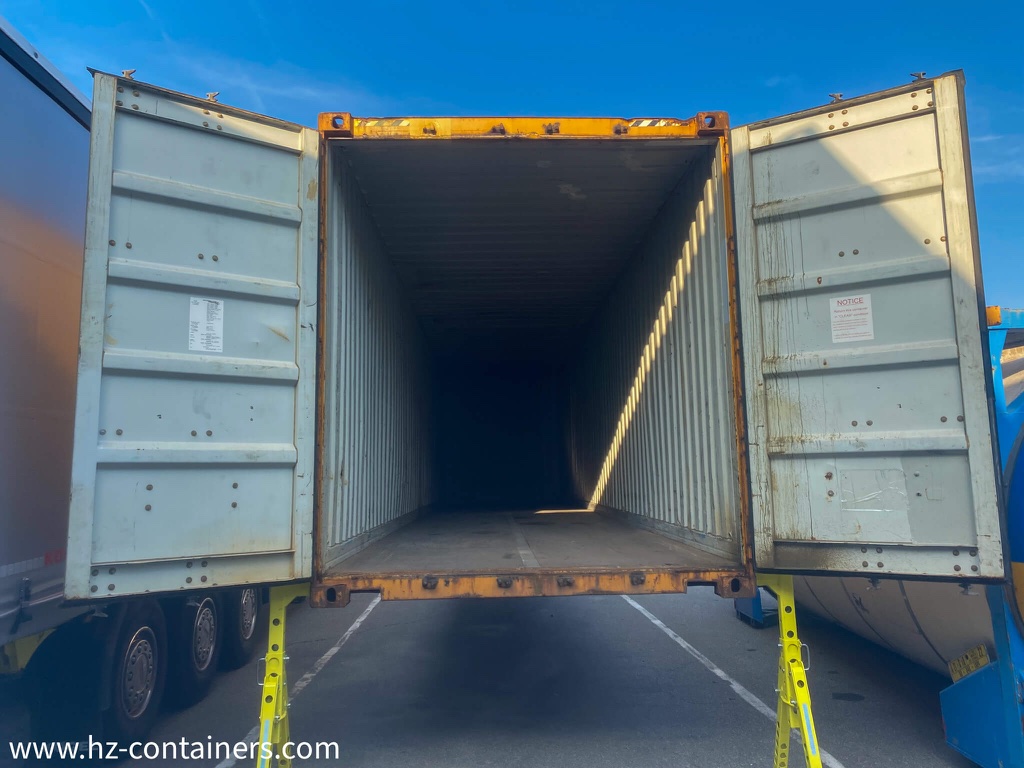Shipping containers are an indispensable part of global logistics, facilitating the seamless movement of goods across vast distances. However, the handling and placement of these containers require precision, safety, and the right equipment. One such innovative solution is the ConFoot container legs, which allow containers to be lifted, transported, and placed without the need for heavy machinery. But a critical component of successfully using container legs, such as those from ConFoot, is ensuring the ground surface is suitable for the operation.
Why Surface Preparation Matters
Before stacking or placing a shipping container, especially with the aid of ConFoot legs, the condition of the ground surface is paramount. A surface that is uneven, soft, or grassy can compromise the stability of the container, leading to potential safety hazards or damage to the container and its contents. Here are the key considerations:
- Flatness and Firmness: The ground should be completely flat and firm to ensure the container remains stable when lifted or supported by the ConFoot legs. Uneven surfaces can cause the legs to tilt, leading to instability.
- Avoidance of Cracks: Cracked surfaces can compromise the load-bearing capacity of the ground, especially when the container is loaded with heavy cargo.
- No Soft Surfaces: Grass, sand, or other soft terrains are unsuitable as they can lead to sinking or tilting of the container legs.
Tools for Surface Assessment
Using simple tools like a bubble level can help assess the flatness of the ground. Additionally, compacting the surface with gravel or concrete can enhance its load-bearing capacity, making it suitable for container operations.
The Role of ConFoot Legs in Container Handling
ConFoot legs have revolutionized the logistics industry by offering a portable, efficient, and cost-effective solution for container handling. These legs are designed to lift containers off the ground, allowing trucks to drive away without the need for cranes or other heavy machinery. Here’s how they work:
- Mounting: The legs are mounted onto the container while the truck’s air suspension is raised to its maximum height.
- Securing: Once the legs are in place, the securing bolts holding the container on the trailer are released.
- Lowering: The truck’s suspension is lowered, leaving the container standing on the ConFoot legs.
- Mobility: The truck can then depart, leaving the container safely in place.
Advantages of ConFoot Legs
- Efficiency: Quick and easy to install, reducing operational time.
- Safety: Stable and robust construction ensures the container remains secure.
- Mobility: Lightweight and easy to transport, making them ideal for various logistics scenarios.
- Cost-Effective: Eliminates the need for renting cranes or other heavy equipment.
Specifications of ConFoot Legs
ConFoot offers a range of leg models to suit different container needs. For example:
- ConFoot CF14ST10: Suitable for most standard containers, with a load capacity of up to 34 tons and a height range of 1043 to 1448 mm.
- ConFoot CFP15ST11: Designed for ramp placement, ideal for unloading operations.
- Hydraulic Models: Allow for lifting and lowering containers without additional equipment.
Surface Requirements for ConFoot Legs
When using ConFoot legs, the surface plays a crucial role in ensuring stability and safety. Here’s why:
- Load Distribution: The legs distribute the weight of the container to the ground. A firm and even surface ensures this weight is evenly distributed to prevent tilting or sinking.
- Safety: An unstable surface can cause the container to tip over, posing risks to personnel and equipment.
- Durability: Proper ground preparation prolongs the lifespan of the ConFoot legs by preventing undue stress and wear.
Ideal Surfaces
- Concrete: Offers the best stability and load-bearing capacity.
- Compacted Gravel: A cost-effective alternative to concrete.
- Asphalt: Suitable for lighter loads and temporary placements.
Surfaces to Avoid
- Grass: Soft and uneven, leading to instability.
- Sand: Unable to support heavy loads without significant preparation.
- Uneven Terrain: Causes tilting and stress on the container legs.
Conclusion
Using ConFoot container legs can significantly enhance the efficiency and safety of shipping container operations. However, ensuring the ground surface is suitable is critical to maximizing the benefits of these innovative tools. By preparing a flat, firm, and stable surface, you can ensure the safe and efficient handling of your containers.
Contact Us for a Personalized Offer
At ConFoot, we understand that every logistics operation is unique. Contact us today to learn more about our range of container legs and how they can be tailored to meet your specific needs. Our experts are ready to assist you in optimizing your container handling processes.



